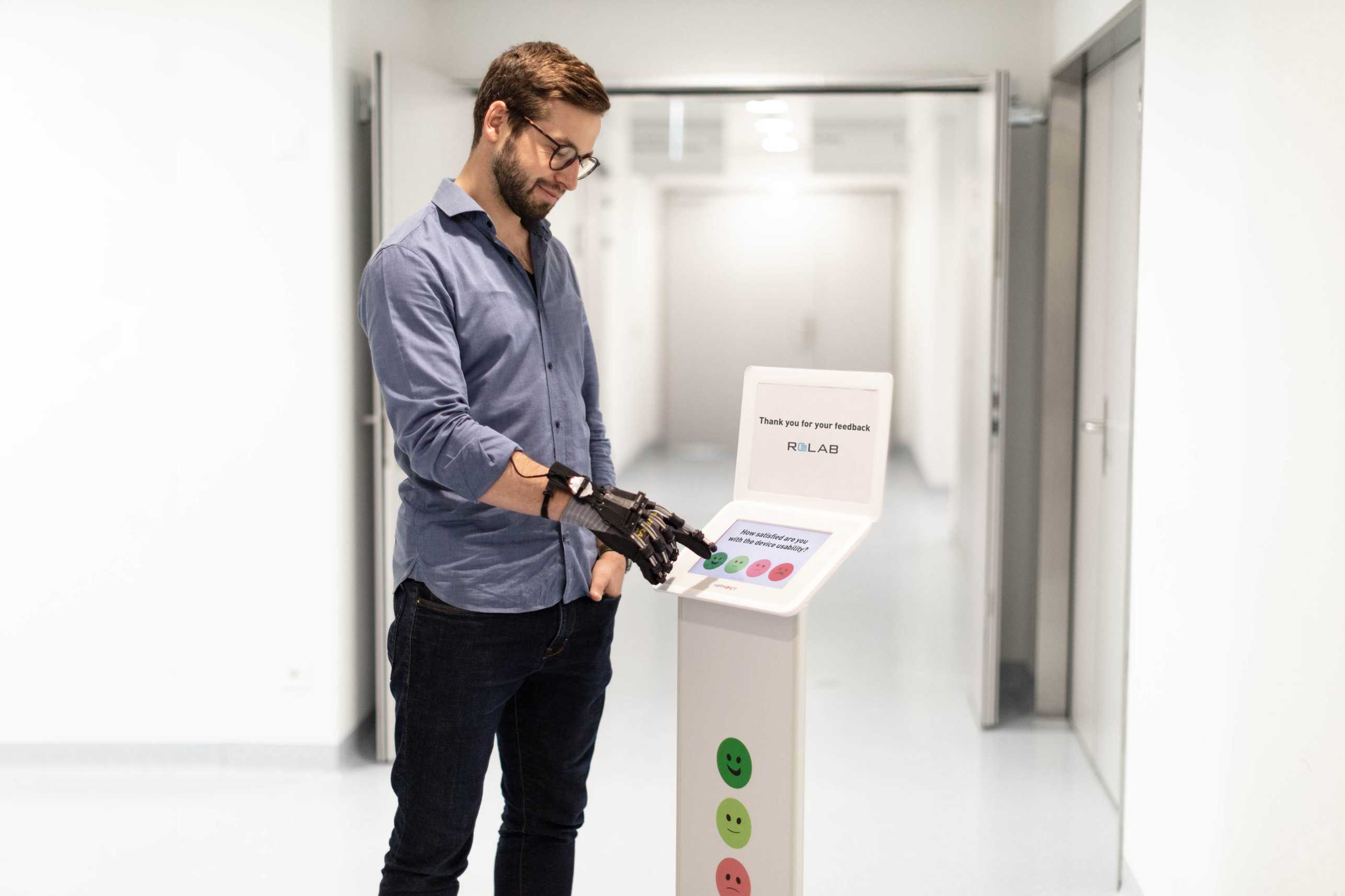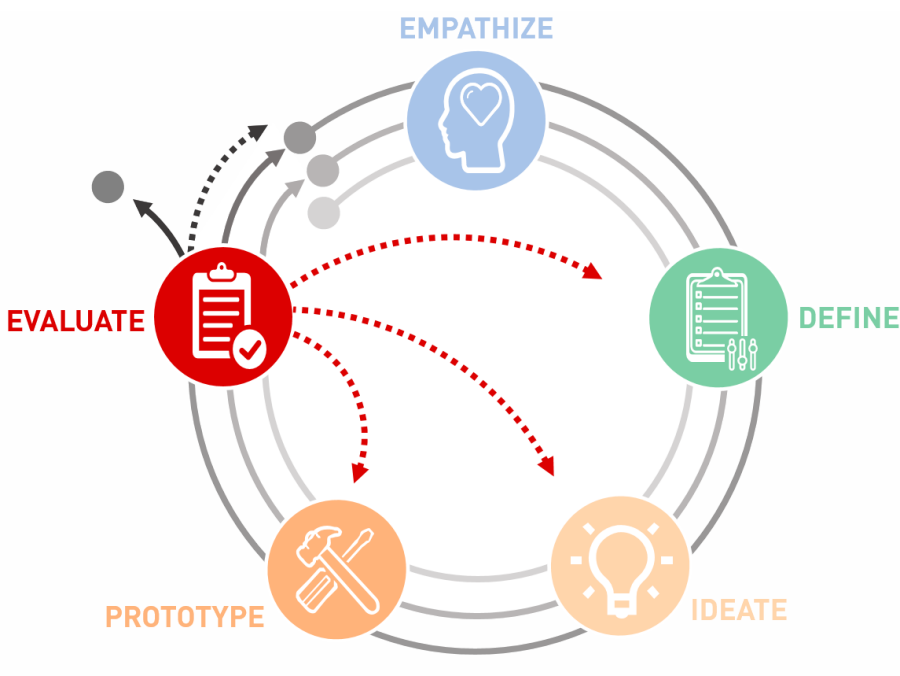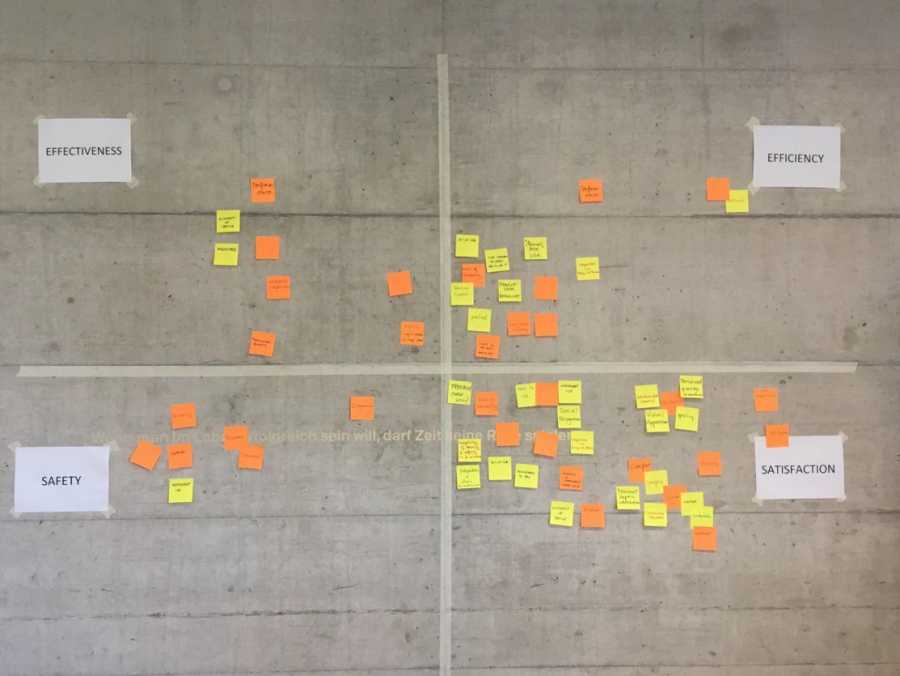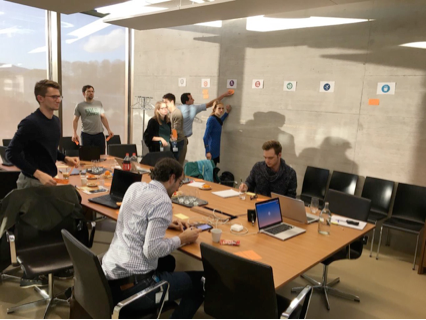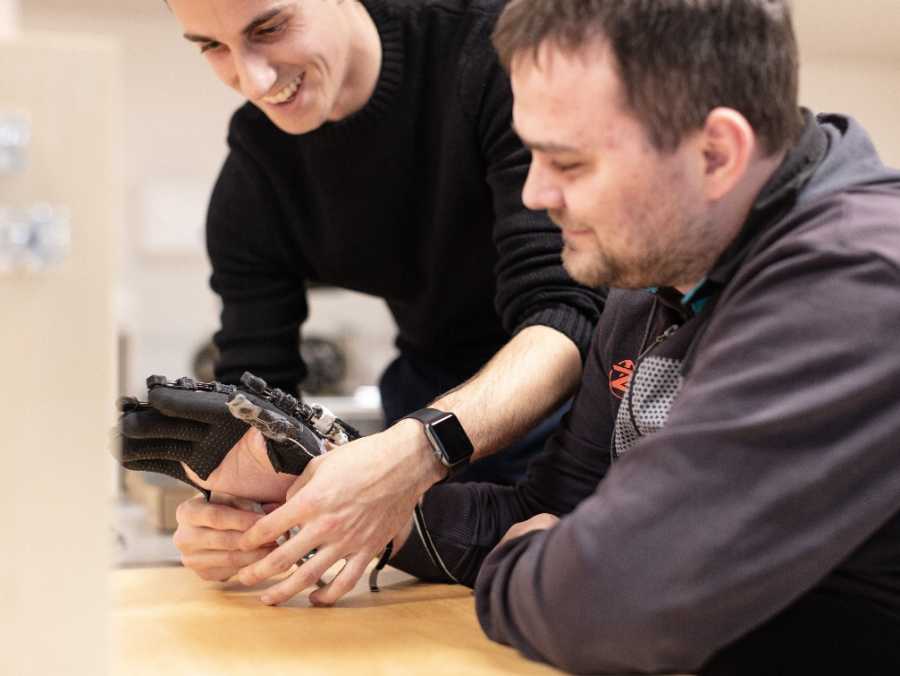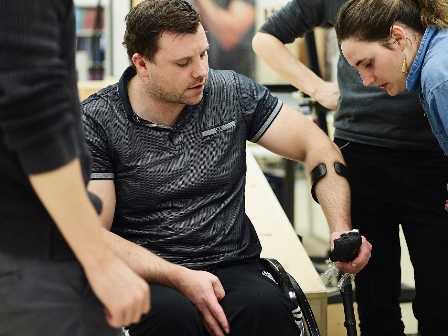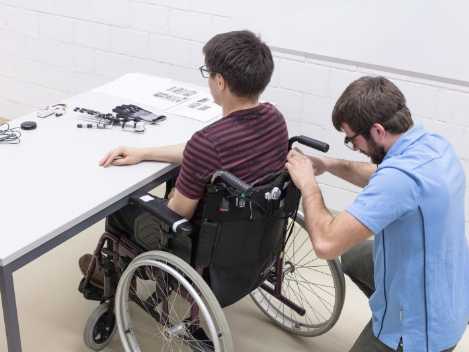Usability Evaluation and Human-Centered Design Research for Wearable Robotic Technologies
We are investigating and establishing a human-centered development framework for wearable robotic assistive technologies based on user experience research, intensified stakeholder involvement, and structured usability evaluation protocols. Our aim is to help provide the best-possible technical solutions for people with disabilities and make sure their needs are met in the design process.
Over the past decade, promising robotic orthoses to assist people with limited muscle function have been developed, tested, and partially integrated into the rehabilitation process. However, it is apparent that many research projects struggle to transfer from applications in well-controlled laboratory environments to real-world usage in clinics or at home due to limited usability and, consequentially, high technology abandonment. To close this gap, a stronger focus on research and development guidelines that include the target end-user into the process has been proposed. More specifically, the application of human-centered design and the use of usability evaluation to include people with sensorimotor disabilities in the development of technological aids has shown to benefit the perceived end-user usability. Although such design principles follow basic processes and structures, the field of wearable robotic assistive technology has yet failed to establish specific guidelines to apply and assess the effect of human-centered design on upcoming new solutions.
The RELab investigates and applies human-centered design within several different projects. In the development of new assistive technologies such as the robotic hand orthosis tenoexo (Meyer & Dittli et al., BioRob 2020, Meyer & Werner et al., WeRob 2020), as well as the robotic gait orthosis VariLeg (Meyer et al., ICORR 2019, Karacan & Meyer et al., BioRob 2020), the integration of end-users and further technology stakeholders plays an essential role. Through structured usability tests, focus groups, workshops, interviews, and surveys, the RELab aims to bring forward high-usability robotic devices, as well as new insights and guidelines to usability evaluation and human-centered design for other wearable robotic assistive technologies. Furthermore, the development of a usability toolbox aims to help experts as well as novices in the field to find appropriate evaluation protocols for their context of use (Meyer et al., AAATE 2019).
Interactive Usability Toolbox
We combined our knowledge on usability evaluation for wearable robotic technologies in an interactive toolbox to find and select context-specific measures. A beta-version of the toolbox is available now - try it out & give us feedback!
external page link to toolbox
Videos
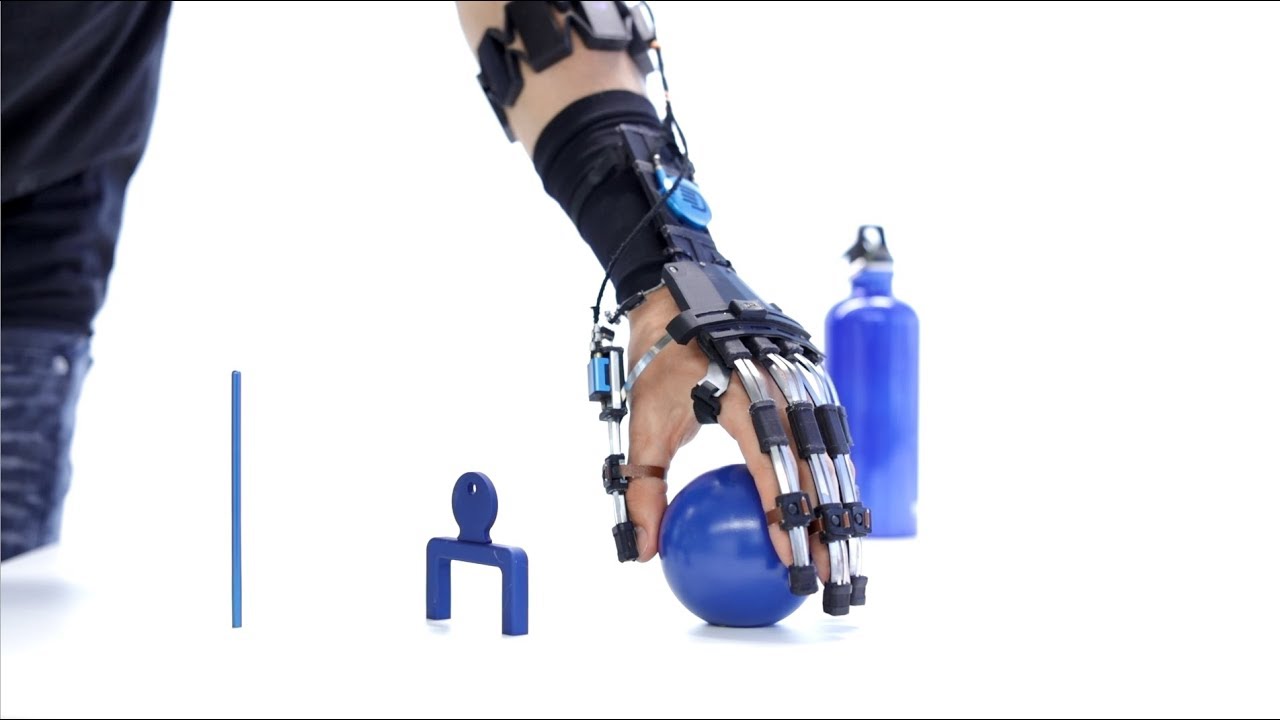
Funding
- Vontobel Stiftung
- Swiss National Science Foundation through the National Centre of Competence in Research on Robotics. (NCCR Robotics)
